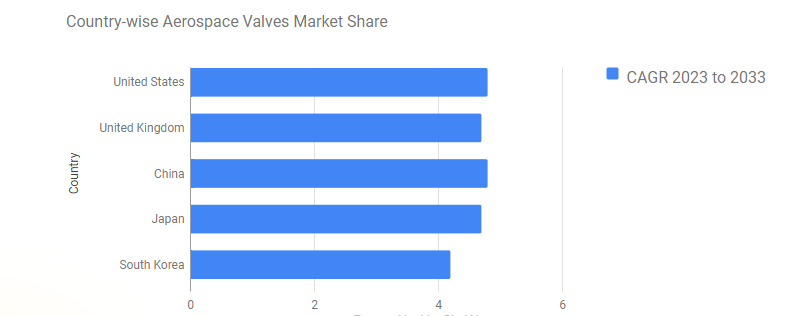Soaring high above us, the success of modern aircraft hinges on a network of specialized valves. The aerospace valves market caters to this critical need, providing valves designed to withstand extreme conditions and ensure the safe and efficient operation of various aircraft systems. Let’s delve into the applications of these valves and explore the trends shaping this dynamic market.
Keeping Aircraft Systems Flowing: Applications of Aerospace Valves
Aerospace valves play a vital role in regulating and controlling the flow of fluids and gases within various aircraft systems:
- Fuel Systems: Fuel system valves manage the flow of fuel from tanks to engines, ensuring proper fuel delivery and pressure for optimal engine performance.
- Hydraulic Systems: Hydraulic system valves control the flow of hydraulic fluid, powering essential functions like landing gear retraction, flight control actuation, and braking.
- Pneumatic Systems: Pneumatic system valves regulate the flow of compressed air, powering various systems like de-icing, anti-skid brakes, and environmental control systems.
- Engine Control Systems: Engine control system valves manage air, fuel, and oil flow within the engine, optimizing performance and ensuring safe operation.
- Environmental Control Systems: Environmental control system valves regulate cabin pressure, temperature, and airflow, ensuring a comfortable and safe environment for passengers and crew.
Get Exclusive Sample Copy of the Report: https://www.futuremarketinsights.com/reports/sample/rep-gb-17150
Emerging Trends Shaping the Market:
- Focus on Lightweight Materials: The constant push for fuel efficiency is driving the demand for lightweight valves made from advanced materials like composites and titanium alloys.
- Demand for Higher Efficiency: Manufacturers are developing valves with improved flow characteristics and lower pressure drops to minimize energy consumption and enhance aircraft performance.
- Integration of Sensors and Automation: The growing adoption of smart valves with integrated sensors allows for real-time monitoring, condition-based maintenance, and improved system control.
- Focus on Reliability and Safety: Stringent regulations and the critical nature of aircraft systems necessitate valves with exceptional reliability and safety features to prevent malfunctions and ensure flight safety.
- Additive Manufacturing: 3D printing technology is gaining traction in the aerospace valve market, enabling the production of complex valve designs with improved functionality and weight savings.
The aerospace valves market is poised for substantial growth, with a projected value of USD 10.8 billion in 2023, expected to increase to nearly USD 17.6 billion by 2033. This growth trajectory reflects a steady compound annual growth rate (CAGR) of 5% throughout the forecast period.
Challenges and Considerations:
- Strict Regulatory Requirements: Aerospace valves must comply with rigorous safety and performance standards set by aviation authorities, demanding high-quality materials and robust testing procedures.
- High Operating Costs: Developing and manufacturing valves for extreme aerospace environments can be expensive, impacting overall aircraft production costs.
- Limited Production Runs: The relatively small number of aircraft produced compared to other industries translates to limited production runs for aerospace valves, requiring manufacturers to be flexible and adaptable.
Get Full Report Now https://www.futuremarketinsights.com/checkout/17150





